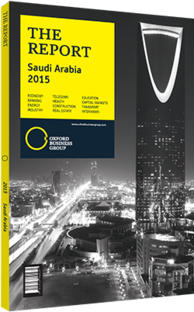John Sfakianakis, Middle East Director, Ashmore Group: Interview

Interview: John Sfakianakis
We have recently seen a correlation between market performance and oil prices on the downside but not on the upside. How do you envisage the future impact of oil price fluctuations?
JOHN SFAKIANAKIS: This is partly true. Oil prices have recovered by about 40%, and after its fall in late 2014 the stock market recovered quite well, due to liquidity, confidence and opportunities. It doesn’t mean that if oil prices crash the stock market will not react, but in the last few years the market has become more resilient. Businesses seem relatively sanguine despite the fall in oil prices, partly because the Kingdom is looking less like an economic outpost and more like a full-fledged centre of commerce, with a domestic financial sector and a business scene that extends well beyond oil. The stock market is deeper and broader than it was in 2008, when oil prices fell to $33 and shares fell 56% to 4700, less than half today’s level. Then, there were 128 listed firms; now there are 170. The stock market is set to open to foreign investors as part of King Salman bin Abdulaziz Al Saud’s economic liberalisation drive.
Do you expect a migration of capital towards sectors such as retail and health?
SFAKIANAKIS: A key feature of Saudi Arabia that stands to support consumption in the medium to long term is demographics. According to the UN, nearly half of Saudis are under age 30, with just 3% over 65. The retail sector has great potential, aided by cultural dynamics, growing discretionary spending and aggressive expansion – most of the companies under our coverage are looking to nearly double space in the next five years. Government efforts to bolster Saudiisation are benefitting discretionary spending and thus retailers as well (nationals are the main clientele). The number of employed Saudis rose by 22% in 2013 (and by 40% for females). To attract Saudis to the private sector, wages have increased dramatically (50% in 2013). Retailers also tend to operate an asset-light model (most shops are leased) and have strong free cashflow generation.
Rising demand and shortage of supply create opportunities for private hospitals. Demand for health care has been rising faster than capacity. The rise in the number of insured (10m versus 3m a few years ago) has fuelled demand for these hospitals, which have grown in importance over the past few years, although by number of facilities and beds, public hospitals still dominate. The number of beds per 1000 people is 2.1, below the 4.5 average for OECD countries. Market studies show the gap between expected supply of beds and demand is widening steadily in Saudi Arabia.
With spending set to produce budget deficits if oil prices stay low, what are the merits of issuing sovereign debt instead of relying on foreign reserves?
SFAKIANAKIS: Saudi Arabia has issued its first sovereign bonds since 2007, selling SR15bn ($4bn) of bonds to local banks in 2015. Saudi banks play a key role in this by stimulating the local debt market, and need to hold highly rated assets to meet Basel III liquidity rules. In general, regulators want to encourage companies to issue bonds as alternatives to the bank loans that now dominate corporate fund-raising. This would spread corporate risk beyond the banking system, making the financial sector healthier and providing more channels for a growing investment industry. Issuing sovereign debt to finance the deficit will also help build a benchmark yield curve, a key step in developing the debt market.
Going forward, the decline in government deposits will slow as the government issues more debt to finance the deficit. A strong fiscal framework that sets the annual budget in a medium-term framework and clearly establishes fiscal policy goals would support the fiscal adjustment. Improving the efficiency of government spending, comprehensive energy efficiency and price reforms, and expanding non-oil revenues will need to form central elements of the fiscal consolidation strategy. Government debt issuance to finance the deficit would help in starting to build a benchmark yield curve, a key step in developing the debt market.
You have reached the limit of premium articles you can view for free.
Choose from the options below to purchase print or digital editions of our Reports. You can also purchase a website subscription giving you unlimited access to all of our Reports online for 12 months.
If you have already purchased this Report or have a website subscription, please login to continue.

